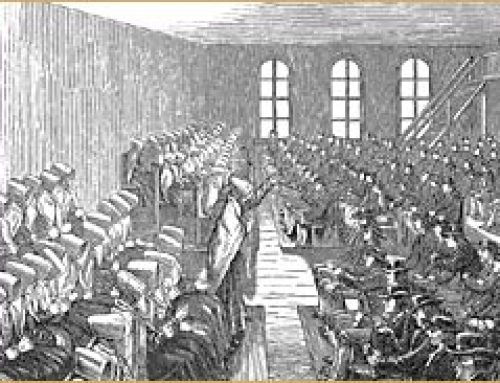
Maerten van Heemskerck, Portrait of Anna Codde, 1529
In the 1500s AD, women in Europe were still getting used to using the spinning wheel instead of the drop spindle to make thread. The spinning wheel was much faster than the drop spindle – four times faster – and so cloth became more available than it had been during the Middle Ages (even though most families couldn’t afford a spinning wheel, and it was mainly professionals who had them).
Spinning on an early modern type wheel
As the weather got colder and colder in northern Europe because of the Little Ice Age, more and more women began knitting wool stockings, gloves, caps, and sweaters. Knitting was also a faster way to make clothes than weaving, and the spinning wheel and knitting combined to allow most people to wear more and warmer clothes than they had in the Middle Ages. People started to have more blankets, rugs, and tablecloths than before, too. Now that they didn’t have to spend all of their time spinning, women were more free to do other kinds of work.

Peasants at the Hearth, by Pieter Aertsen (ca. 1550 AD)
Women still wore long tunics dyed different colors. But women began to wear long linen shirts under their wool dresses, and linen aprons over them. Pockets were little bags that you wore hanging from a belt around your waist.
Men’s tunics got even shorter than they were in the Middle Ages. Men began to wear knitted stockings and linen undershirts and loose shorts under their wool or leather tunics. Men’s tunics got shorter and shorter to show off their fancy stockings – sometimes like mini-skirts, or even shorter, like modern T-shirts and leggings, sometimes with shorts over the leggings, and sometimes not. Both men and women covered their heads with scarves (for women) or hats (for men), or big straw hats if they were working in the sun. Many people, especially children, still went barefoot, even in cold weather. People who had them wore wool stockings and wooden clogs, or leather sandals.
Most people slept in their undershirts, now that Protestant ministers began to tell people it was wrong to sleep naked (just like it was wrong to swim naked).
Cotton and Machine-Made Clothing in Europe
Bibliography and further reading about European clothing:




